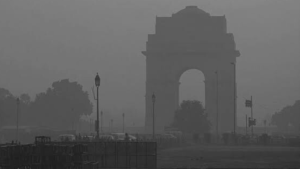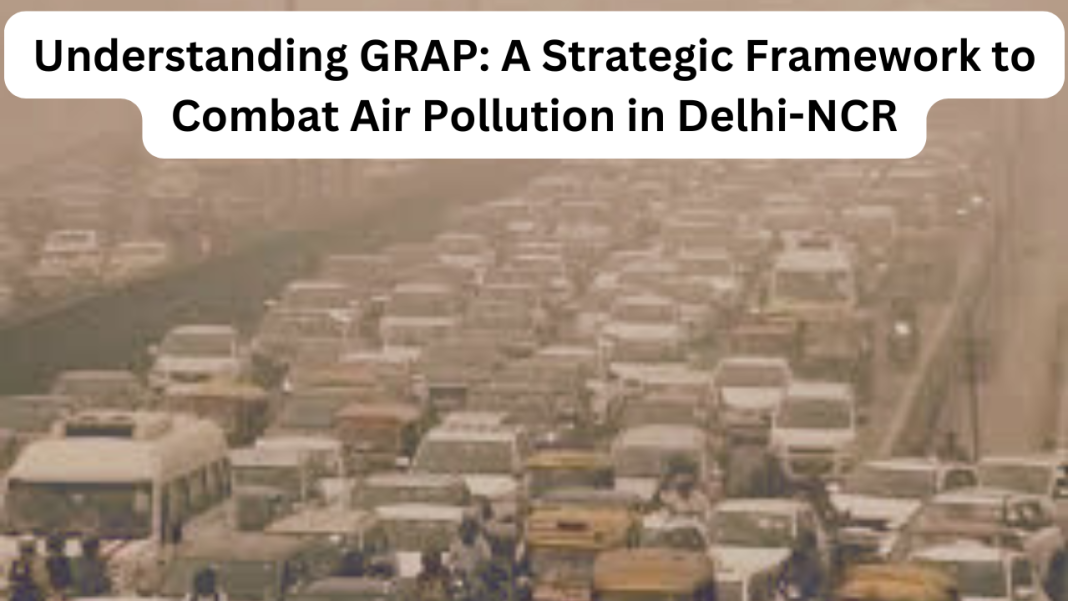Digital News Desk:
The air quality in Delhi and the surrounding National Capital Region (NCR) has been a topic of grave concern for several years. The region frequently experiences hazardous levels of air pollution, especially during the winter months. In response to this pressing issue, the government introduced the Graded Response Action Plan (GRAP), a comprehensive framework designed to mitigate air pollution levels based on real-time air quality data. The implementation of GRAP has become a cornerstone of Delhi’s efforts to combat the harmful effects of air pollution and protect public health.
What is GRAP?
The Graded Response Action Plan (GRAP) is a set of emergency measures that are activated when air pollution in the Delhi-NCR region reaches certain thresholds. It was devised under the directives of the Supreme Court of India in 2016 and came into effect in January 2017. The plan was conceptualized and developed by the Environment Pollution (Prevention and Control) Authority (EPCA), which was later replaced by the Commission for Air Quality Management (CAQM) in 2021.
GRAP operates on a multi-tiered, graded system that outlines specific measures to be implemented depending on the severity of pollution. It provides a dynamic and flexible approach to controlling air pollution, addressing immediate concerns while also aiming for long-term improvements in air quality. The plan classifies air quality into four categories, each corresponding to a specific set of actions:
- Moderate to Poor (AQI: 101-300)
- Very Poor (AQI: 301-400)
- Severe (AQI: 401-450)
- Severe+ or Emergency (AQI: above 450)
Each category triggers a range of actions designed to prevent air quality from deteriorating further and mitigate its harmful effects on the population. GRAP is unique because it activates these measures in real-time, based on daily pollution readings.
Key Components and Measures of GRAP
GRAP includes a comprehensive array of strategies aimed at reducing both the sources of pollution and exposure to polluted air. These measures are applied progressively as air quality worsens.
- Moderate to Poor (AQI: 101-300)
In this range, pollution levels are still manageable but require proactive steps. Some measures include:
- Mechanized sweeping and water sprinkling on roads to reduce dust.
- Enforcing strict anti-burning regulations to control the burning of waste and biomass.
- Banning the use of diesel generator sets, except in emergencies and essential services.
- Enhancing traffic management to reduce congestion, which helps cut down vehicular emissions.
- Very Poor (AQI: 301-400)
As air quality declines, stricter measures are enforced:
- Increasing the frequency of mechanized road cleaning and water sprinkling.
- Ban on brick kilns, stone crushers, and hot mix plants that are not running on cleaner fuels.
- Encouraging the use of public transport to reduce traffic emissions.
- Halting the operation of visibly polluting industrial units.
- Imposing penalties on the sale and use of firecrackers, except during designated festival times with proper regulation.
- Severe (AQI: 401-450)
This stage signals dangerously high levels of pollution, prompting drastic measures:
- Stopping all construction activities to reduce dust.
- Closure of brick kilns and hot mix plants that have not transitioned to cleaner fuels.
- Banning the entry of heavy and medium trucks into the city unless carrying essential commodities.
- Closure of stone crushers and increased restrictions on industrial activities.
- Encouraging private vehicle sharing and carpooling.
- Severe+ or Emergency (AQI: above 450)
This is the most critical stage, where air pollution becomes a direct threat to human health:
- A ban on all construction and demolition activities.
- Halting all non-essential industrial activities.
- Introduction of odd-even schemes for private vehicles to cut down on traffic emissions.
- Closure of schools and restrictions on outdoor activities.
- Declaration of public health emergencies, advising people to stay indoors, particularly those with respiratory issues.

How Effective is GRAP?
Since its inception, GRAP has played a crucial role in reducing extreme pollution events in the Delhi-NCR region. The graded system ensures a quick and targeted response, helping to prevent air quality from deteriorating to catastrophic levels. It has also fostered greater public awareness about the dangers of air pollution and encouraged more responsible behavior, such as reducing vehicle use or avoiding the burning of waste.
However, GRAP is not without its challenges. Many experts argue that while the plan has been effective at addressing pollution spikes, it is a reactive measure rather than a long-term solution. The enforcement of GRAP largely depends on local governments, and compliance has been inconsistent at times. Additionally, seasonal factors such as stubble burning in neighboring states and meteorological conditions can overwhelm the measures outlined in GRAP.
Future of GRAP and Air Quality Management
The success of GRAP underscores the need for more sustained and long-term strategies to address the root causes of air pollution. The transition to cleaner fuels, improvement in public transportation, and stricter industrial regulations are crucial to complement GRAP’s reactive approach.
The creation of the Commission for Air Quality Management (CAQM) to replace the EPCA is a step towards better coordination and stricter enforcement. It is expected to refine and expand the scope of GRAP by integrating more comprehensive pollution control strategies and engaging regional stakeholders in addressing cross-state pollution sources like stubble burning.
In conclusion, GRAP serves as an essential tool in managing Delhi-NCR’s air pollution crisis, but it is clear that sustainable, proactive efforts are equally important to achieve long-term improvement in air quality.
You May Also Read: Delhi Imposes Firecracker Ban till 1 January 2025 to Combat Winter Pollution








